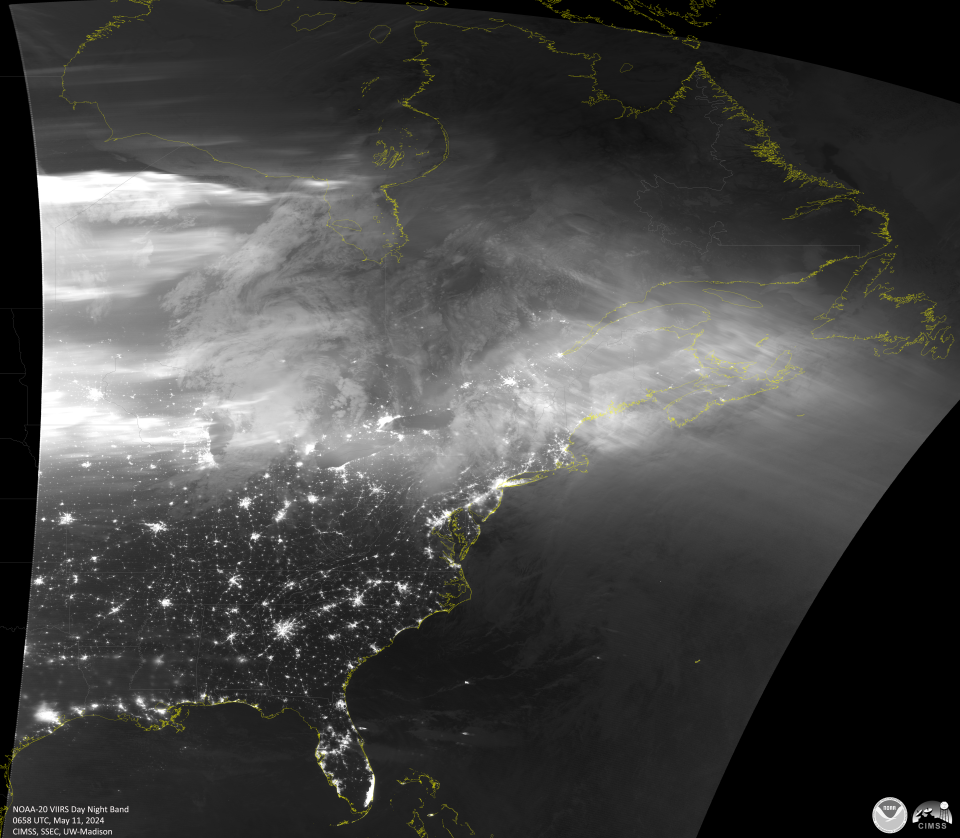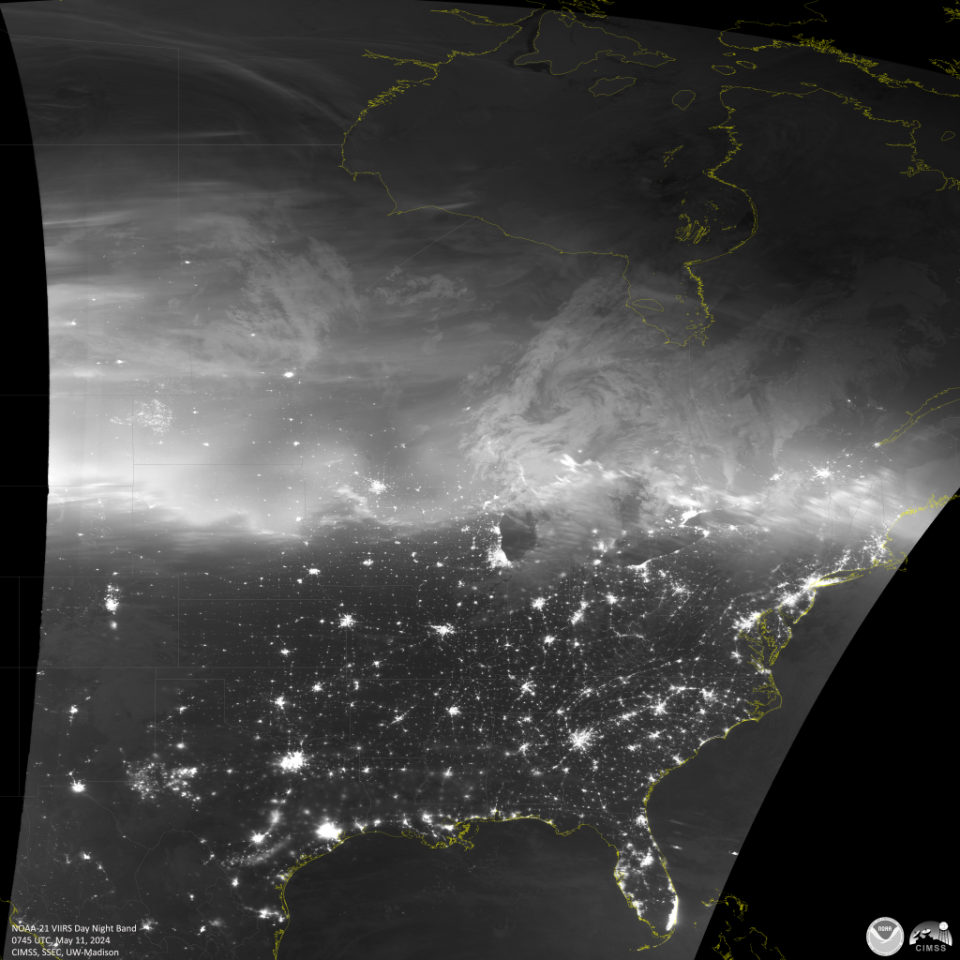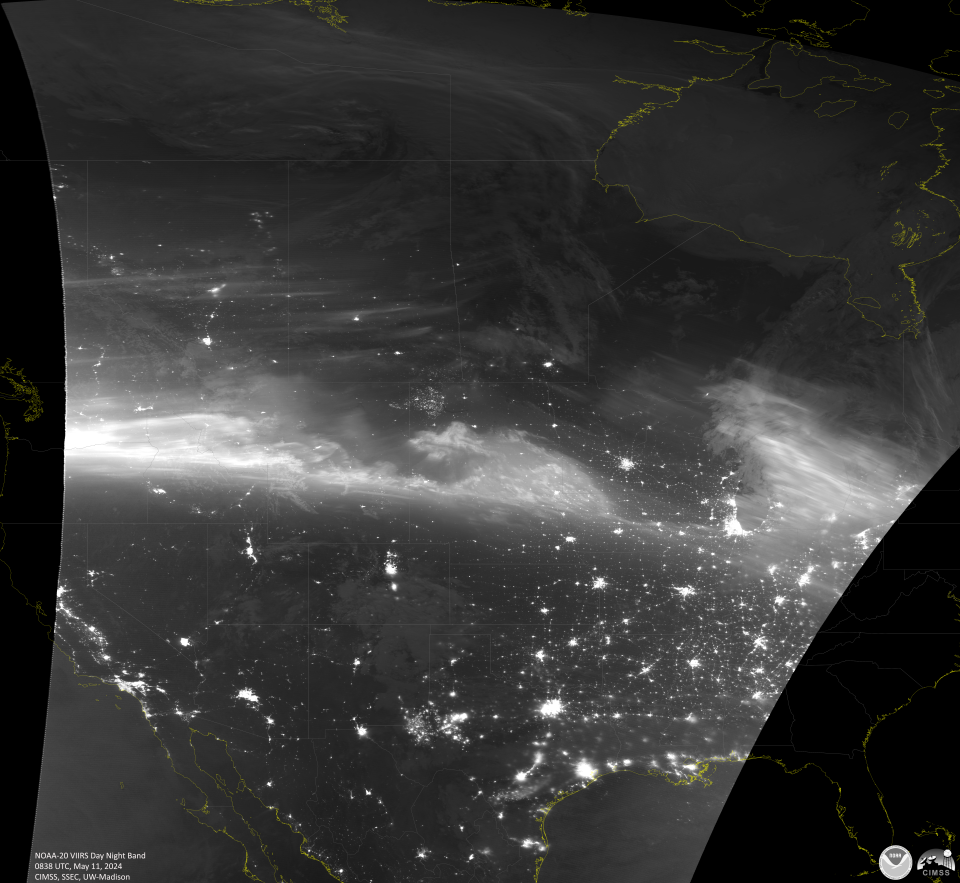Satellite images show what the historic geomagnetic storm looked like from space
MINNEAPOLIS — Millions of Americans looked to the night sky and snapped magical photos and videos of the northern lights this weekend during the momentous geomagnetic storm.
But cameras were also trained on the storm from space, capturing phantasmal monochromatic shots from the sun's electromagnetic radiation.
The University of Wisconsin-Madison's Cooperative Institute for Meteorological Satellite Studies (CIMSS) released eight satellite images of the storm on Tuesday, photographed by the Joint Polar Satellite System (JPSS) fleet early Saturday.

The National Oceanic & Atmospheric Administration (NOAA) says its five JPSS satellites supply most of the data used in weather forecasting in the U.S., orbiting the Earth pole to pole and around the equator more than a dozen times daily. The fleet first took to orbit in 2011 and is expected to remain functional through the 2030s.
This was the strongest geomagnetic storm to impact Earth since October 2003, categorized as a G5 — the highest level on NOAA's scale.

Besides producing jaw-dropping aurora borealis, solar flares from this storm impacted some power grids and GPS and communications satellites. The storm also disrupted some navigational systems in farming equipment in the Midwest and other parts of the country amid the planting season's peak.
"I've never dealt with anything like this," Minnesota farmer Patrick O'Connor told the New York Times.
Solar winds spewed by the sun travel at speeds between 250 and 500 miles per second in swirling spirals due to the star's rotation.

The winds can take up to 90 hours to reach Earth, which is 91 million miles away. The vast distance and variable speed that solar energy travels make aurora forecasts as accurate as meteorological forecasts from the 1950s.
NASA officials say auroras are caused by electrically charged particles in solar winds colliding with the Earth's atmosphere.
U.S. honey bee population reaches record high
Slovakian prime minister shot, in life-threatening condition

